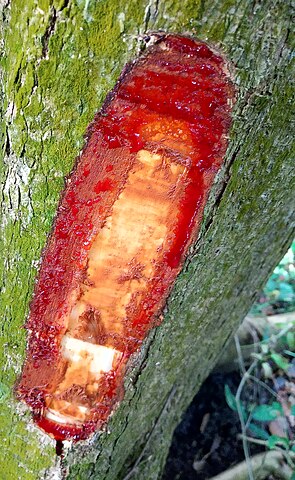When I heard Cotundo for the first time, I was just told it was located in the Ecuadorian jungle. By far, the majority of travelers to Ecuador come to visit the Galapagos. The majority of the minority come to see the Andes and Ecuador’s “Avenue of the Volcanoes.” But very few venture out east to El Oriente, the large Amazonian basin that constitutes more than half of Ecuador’s land mass. Cities like Coca or Lago Agrio are popular destinations in that area.
El Oriente is a paradise for bird watching, cave spelunking, and seeing some of the last virgin rainforests left on Earth. And luckily, you don’t have to travel that far into it to get your fill!
I wasn’t looking for dragon’s blood. I didn’t even know I was on its trail. I just was looking for a relatively easy and affordable way to see the eastern side of Ecuador for the weekend.
That’s when a friend tipped me onto Cotundo, a 4 1/2 hour bus ride from Quito.
What is Cotundo?
Tucked into the cloud forest, Cotundo is one of those towns you have to let the bus driver know to stop at, otherwise, he’ll zoom right past it. Apparently, the new infrastructure for redirecting the nearby river into a canal passing through the center of town was started before government funds could adequately pay for it, a situation not so uncommon here. The unpaved roads wind everywhere like spaghetti, surrounding an oddly abundant number of amateur soccer fields, a passionate pastime here in the forest communities.

You have to walk in from the highway down the dirt road into town, but our host at the nearby Huasquila Lodge was gracious enough to come and get us with her truck. We were treated to a fabulous warm zucchini salad and a relaxing drink, and then immediately were sat down to go over options for getting out of the lodge and into the forest where a myriad of magic was waiting to tantalize us.
The next morning, we donned the always necessary rubber boots, because mud is the one thing always predictable about the jungle, and met our guide José, who without really going far or high, would lead us on to three hours of wonder through virgin rainforest. Of course, he always stayed several steps ahead of us to overturn leaves that might be hiding a snake, and for good reason as at one point he uncovered the small but terribly venomous Shinshin and hacked it with his machete before it could react.

Along the trail, we were able to see naturally growing cacao plants (i.e, chocolate) and coffee, snack on small ants that taste like lemon, feast our eyes on the magnificent Huasquila vines after which the area is named, and even made a sturdy rope bracelet directly from deconstructing the leaf of an agave plant.
But the real apex of the trek through this moderately humid environment was when we approached an unassuming tree that in the Quechua language, they call yawar wiki, or blood tree. José approached it, poked it with his machete, and to our amazement, it started bleeding…red blood. He let some of the gooey blood flow on to his fingers, then came over to me looking at my arms for a bruise or a sore. Not hard to find on me, as I’m always running into things or scraping my knee.
When he found a rather raw spot on my elbow, he rubbed it with the blood of the tree, smiled, and said in his broken English, “good to go.” He went on to explain the healing properties of this red tree resin, used locally for centuries kind of like a combination between a band-aid and a quick-acting neosporin. It immediately foams into a white substance when it contacts your skin, then over the next couple of days heals the sore to a vanishing point. In Spanish they call it Sangre de Drago, or blood of the dragon.

Getting to the Jumandy Caves
After another 30 minutes of walking, we came to a beautiful waterfall spilling over the mouth of a cave. I was so enamored with the healing process on my elbow, that despite the growing humidity of the morning, I was willing to decline the opportunity to go for a refreshing dunk underneath the cascading silver stream. José assured me that sangre de drago has had eons of evolution to adapt and that it is resilient to water, so with that I shucked my shirt and boots and showered myself in the cold refreshing falls. Not even the trip a day later to the famous Jumandy Caves, where you literally must swim through portions of serpentine tunnels, would perturb yawar wiki from continuing with its magic, and a few days later, the scab was completely gone, what would have taken over a week to heal with over-the-counter western medicine.
When I was back in Quito, describing how much I was impressed with sangre de drago, an Ecuadorian friend nodded her head and walked to the bathroom medicine cabinet to return with a little bottle of it with a handwritten label. The substance is commonly sold in small quantities at local outdoor markets by folks from the countryside, usually indigenous families who bring various types of fruit and medicinal plants with them to market for sale.
So, you see, Dragons don’t have to be all that scary. Sometimes they can be your most soothing friend.
Cotundo It is between Baeza and Tena, but closer to Tena. If you are coming from Quito, I don’t recommend the many options that will take you all the way down to Puyo first, that’s way too far. Instead, route yourself through Baeza, then south towards Tena.


